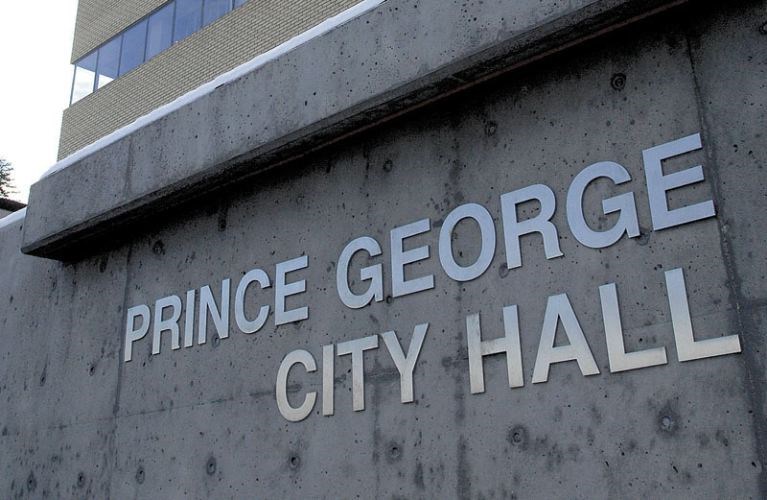Animal Control Bylaw to be updated
City administration will prepare a new Responsible Animal Ownership Bylaw to replace the city's existing Animal Control Bylaw, following a unanimous vote by council on Monday night.
City bylaw services manager Fred Crittenden said the city's current bylaw includes breed-specific regulations for pit bulls which haven't proven effective.
"There is no evidence that it works," Crittenden said. "Currently there is only 50 (dogs registered as pit bulls) licensed. The enforcement is based on the honesty of the owners."
Identifying the difference between the restricted breeds -pit bull terriers, American pit bull terriers, pit bulls, Staffordshire bull terriers, American Staffordshire terriers and crossbreeds of those breeds - and similar-looking dogs like the American bully breed is difficult, he added. The current bylaw imposes higher costs to license a restricted breed and requires dogs of those breeds to be muzzled when out in public.
Despite the bylaw, the number of dog bites reported has increased - and the percentage of dog attacks involving pit bulls or other restricted breeds has risen from 14 per cent in the five years prior to the rules coming into effect, to 23 per cent in the 10 years since the rules were put in place, Crittenden said.
Coun. Brian Skakun said he was on council when the breed restrictions were put in place and stands by them.
"I have no problem with with keeping pit bulls muzzled - I didn't then, and I don't now," he said.
The new bylaw will update terminology and best practices, examine increased responsibilities for cat owners, and look at other issues regarding animal ownership, he added.
"The bylaw doesn't even have a limit on the number of pets in a household," Coun. Jillian Merrick said. "It's really a free-for-all."
In addition, the city's current bylaw doesn't address licensing, zoning or other concerns regarding backyard animal breeders, she said.
Museum seeking city support
The Central B.C. Railway and Forestry Museum is seeking $100,000 from the City of Prince George to help fund a $1.24 million display pavilion at the museum.
The proposal calls for the construction of a heavy-timber covered structure to shelter between eight and 10 of the museum's railcars from the elements and increase accessibility for visitors, museum executive director Ranjit Gill said.
The museum has an agreement with the non-profit Timber Framers Guild, which would build the project primarily using volunteers.
City council referred the request to city administration, however the request is unlikely to be ready for council consideration when the city begins budget deliberations on Feb. 1.
Gill said the museum is continuing to look for other grants and in-kind support from the private sector - especially heavy equipment rentals, roofing, lumber and accommodation for out-of-town volunteers.
Bylaw fine increases
City council approved changes to 10 bylaws which sets the maximum penalty under the bylaws to a consistent $10,000.
The change was part of a series of housekeeping updates to make the bylaws consistent with the city's Bylaw Notice Enforcement Bylaw.
"By making that change, the bylaws listed would give a judge the power to impose the maximum if an information was laid in accordance with the Offence Act," the city report said. "This option would typically be used when it has been determined that the offence was severe in nature and it was in the community's best interest to have the courts determine the most appropriate fine."
The bylaws impacted including the city's animal control bylaw, noise control bylaw, parks bylaw, garbage collection bylaw, property maintenance bylaw, parking and traffic bylaw, off-street parking bylaw, snow and ice control route restriction and regulation bylaw, highways bylaw and water regulations bylaw.
The update also exempts vehicles displaying Freedom of the City Parking Permits and Veterans' License Plates from the restrictions on timed parking blocks or zones.
School sidewalk safety concerns
City council added Immaculate Conception school to the list of city schools concerned about the lack of sidewalks on roads surrounding the school.
Principal Donncha O'Callaghan and school council representative Stephanie Hellyer voiced their concerns about the lack of sidewalks on Cathedral Avenue and adjoining streets.
"Too me it's very concerning the number of people walking and the volume of traffic," O'Callaghan said. "We have 200 students, many of whom walk with their families (to and from school."
In addition there is an after school care program located at the school and the playground attracts people from around the neighbourhood to the school grounds, he added.
Encouraging children to walk to school encourages children to be "independent, active and environmentally-friendly," Hellyer said.
"It's a big, upcoming neighbourhood," she added. "It's an area with a lot of young families."
City general manager of engineering and public works Dave Dyer said Immaculate Conception is one of at least six schools which have requested improvements or additions to the sidewalk networks near their schools.
A study done for the city in 2004 called for the construction of 160 kilometres of new sidewalks in the city, nearly doubling the existing 170 km.
Since 2004, the city has only constructed 1.7 km of new sidewalks, excluding the 2.4 paved trail along Tyner Boulevard.
In 2016 the city allocated $250,000 for sidewalk construction, and city staff will recommend council increase that to $400,000 in future years during the budget deliberations beginning in February, Dyer said.
Coun. Garth Frizzell said city council will have to decide if the city should move spending currently used for road work, and reallocate it to increase spending on the city's sidewalks and parks.
In 2004, it was estimated that the city would need to spend an average $2.15 million per year over 25 years to complete the proposed 160 km of new sidewalks.



